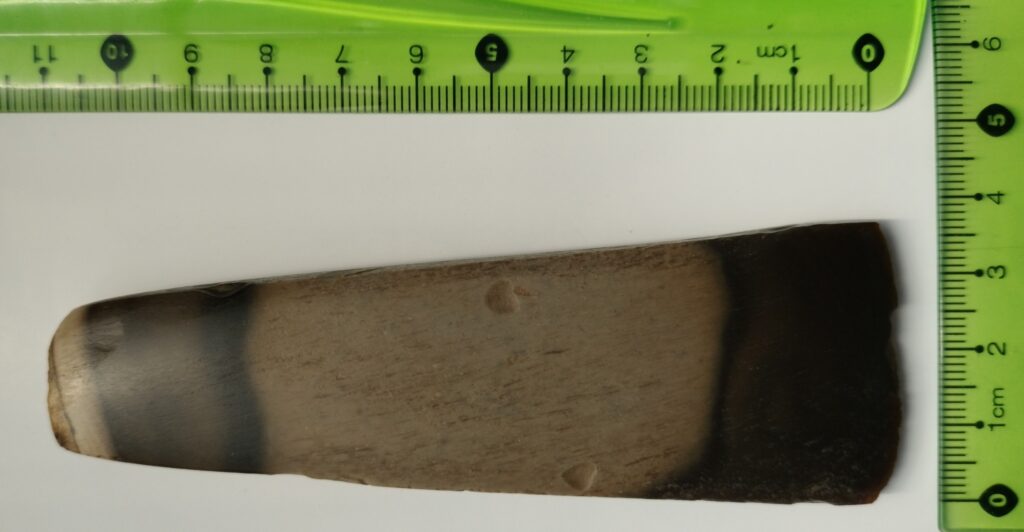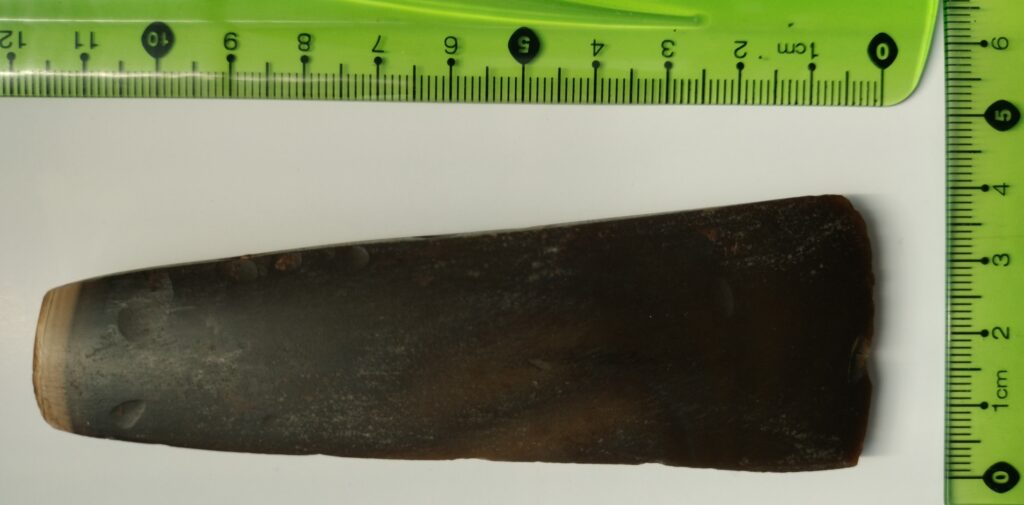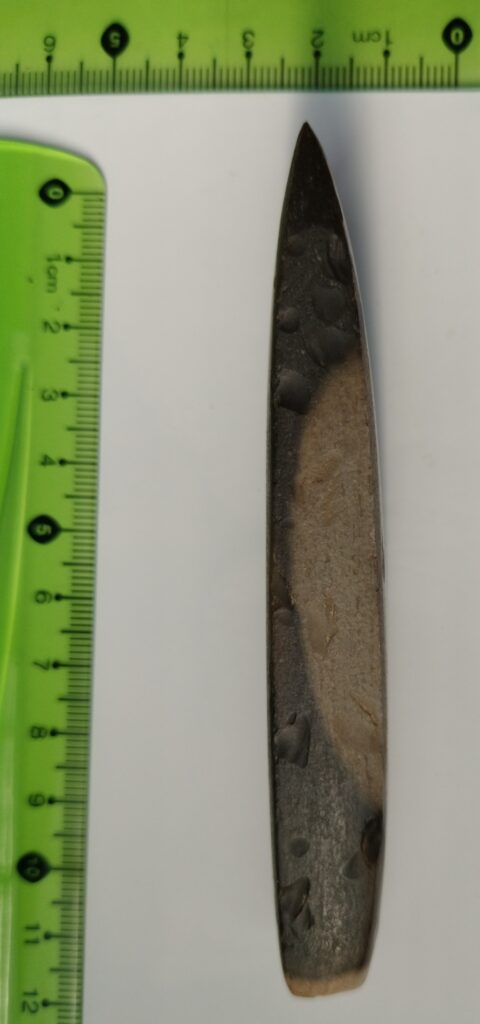Artnet News reports a really fascinating find made by a Polish grandmother over 50 years ago, which is only now gaining attention. The story goes that she found what she described as an “unusual looking” stone in a field near her home.
And true to the nature of anyone who loves collecting “unusual looking” rocks, she decided to keep it. Fast forward about fifty years, she handed down this unique stone to her grandson. It was only then that he chose to have it examined by an expert.

After inheriting the stone, her grandson, Mariusz Buczko decided to have it professionally evaluated and took it to a local museum. There, Jerzy Libera, a scholar from the University of Maria Curie-Skłodowska, examined it.
The stone was authenticated as a significant prehistoric artifact, identified specifically as a flint axe-head from the Neolithic era, dating back approximately 4,400 years. Libera also believed that the people credited with making the stone axe-head are people of the Globular Amphora culture.


Characteristics of the Flint Axe:
- Shape: Trapezoidal
- Length: Approximately 4.3 inches
- Blade: Slightly serrated
- Surface: Appears smooth
- Coloring: Gray-brown with varying shades
Another resident from Biłgoraj contributed a second archaeological find—a fragmented hatchet believed to be from the same time period, although less information could be extracted due to its incomplete state.
These two finds provide invaluable insight into the Globular Amphora culture. The discovery of these two artifacts pushes the boundaries of their previously known habitation, indicating that their influence might have spanned a much larger geographical area, extending through eastern Poland and neighboring Ukraine.
Biłgoraj, the discovery site of these artifacts, stands roughly 150 miles southeast of Warsaw, near the border with Ukraine.
- Online rock and mineral club for collectors of all levels!
- Find community with like-minded rock and mineral enthusiasts.
- Monthly Giveaways!
- Free Access to Entire Digital Library of Products (annual memberships)


